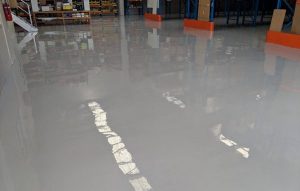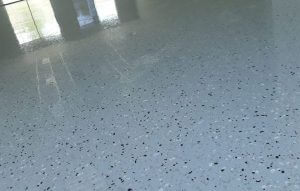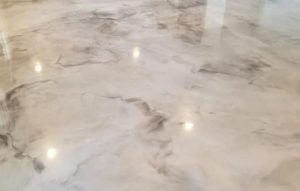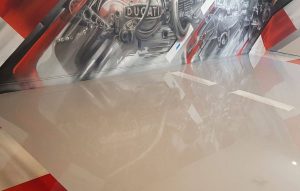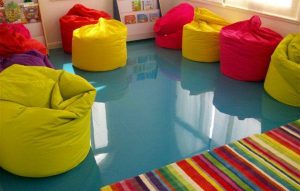Should You Do Your Own Concrete Honing?
Have you ever wondered if concrete honing Sydney is something you can do yourself? If so, this article will answer your questions! You will find out the materials needed, how it is made, advantages and disadvantages. You’ll also learn about common mistakes people make when doing their own concrete honing Sydney.
What is Concrete Honing?
Concrete honing Sydney is a concrete finishing technique used to make concrete surfaces appear smoother.
It’s done by rubbing the concrete surface with abrasive materials such as sandpaper, steel belts or diamond pads. This progressive grinding results in a flat, smooth and glistening honed concrete floor.
Different finishes can be achieved depending on the type of honing material used and how often it is applied.
Should You Do Your Own Concrete Honing?
Performing concrete honing Sydney by yourself both have its advantages and disadvantages. But the results of DIY often rely on your skills and whether you have the necessary tools and supplies to get the job done effectively. Let’s explore further its advantages and disadvantages.
Advantages of DIY Concrete Honing
An inexpensive way to improve the look and feel of your concrete.
Are you looking for a cheaper way to stylize your concrete floor? DIY Concrete honing Sydney is an inexpensive concrete reconstruction technique that will make your concrete look new and aesthetically pleasing.
Do it on your own time.
If you don’t want to wait for the next availability of a contractor, then you can do it yourself. With DIY concrete honing, you can take care of your concrete any time you want.
Great bonding time.
Honing your concrete with family members might be a great bonding opportunity. You might be able to teach your kids about it while they’re there helping you out. Working on concrete together might be a new cherished memory for you and your family.
Great for small-scale projects.
If you’re only honing a small concrete area in your home, then a DIY might be a great option. However, make sure you can just borrow or rent the tools. That’s because spending hundreds (maybe thousands of dollars) on high-end supplies might not be worth it if you’re using it on a small-scale project.
Outcome suited to your standard.
Are you worried about hiring someone that would cut corners on the task? If you are skilled at concrete honing Sydney, then DIY might be a good idea. You can make sure that it’s suited to your standards, and you’ll get a good quality finish.
Learning a new skill.
If you’ve never done concrete honing Sydney by yourself, then this might be a good opportunity to learn a new skill through the power of YouTube and blog articles. Soon enough, you might even be able to offer this skill as a service.
No interviewing professionals
When you do it yourself, you say goodbye to researching contractors to do the task. You won’t have to look over different portfolios and websites. You won’t go through the tedious process of picking the right professional for the project.
Disadvantages of doing it yourself
Here are some of the disadvantages that you need to consider.
Investing in your own tools.
Concrete honing Sydney requires tools to get the job done more effectively. Some of these tools are high quality grinding equipment, vacuum for dust clean up and so much more. If you don’t feel like investing in these tools, especially for one-time projects, then DIY might not be a great idea.
There’s a learning curve.
Concrete honing Sydney is a skill that takes some time to learn. It’s not as easy as it may seem. It’s even more difficult when you’ve got cracked and uneven concrete. Applying too much pressure on the concrete might even cause irreversible damage. So if you don’t feel confident in your skills, then it might not be for you.
You might not have the energy or time for it.
If you’re short on time or don’t have the energy to do concrete honing, then DIY might not be for you. If you’re new to it, it can take a few days to preparation and adjusting to the learning curve. Concrete honing professionals in Sydney have done this technique multiple times. Thus, they are faster and more efficient in it.
Not advisable for damaged floors.
Do you have uneven or cracked concrete floors? If yes, then DIY is not advisable for you. Because of the huge complexity of these kinds of projects, it’s important to get professional concrete services. This can make sure that the damage is repaired well, and that mistakes are avoided.
Not advisable for large scale projects.
Do you have concrete floors that are over 1000 sq ft? If yes, then it might be too tedious or time-consuming to do it yourself. Delegating the task to professionals might be a more cost-effective and less time-consuming option.
Risk of failing
If this is the first time you’re doing concrete honing Sydney, there is a large chance that the results won’t be up to your standard. It might even result in a need for a “re-do”. In this case, DIY will cost you more time and money than you would have when you delegate it to a professional.
Should you do your own concrete honing?
Yes, you should do your own if you’re experienced in it. DIY is great if you also have the time, resources, and equipment to do the job right.
No, you shouldn’t do your own concrete honing if you’ve never done it before. The mistakes that you’ll make due to the learning curve can cost you time and money.
Concrete Honing Sydney: Going Through the Process of DIY Concrete Honing
Honed concrete creates a magnificent design statement in outside areas, and it is just as effective in an outdoor entertainment area or around a pool. The greatest part is that it is reasonable, and it will be practically maintenance-free for decades to come.
You can give new life to an old, weathered, or stained aggregate surface by honing it, or you can polish up a newly laid concrete substrate to get the smooth finish you desire. All you need is the appropriate tools and a detailed plan of what needs to be done, and you’ll be on your way to achieving your goals.
Concrete Honing Sydney: A Guide on the Proper Way of Honing Concrete Floors?
To begin, it is essential to keep in mind that honing concrete occurs in phases ranging from two to three. To begin, a coarse diamond with a grit of between 20 and 30 is fastened to the grinder and moved around the floor. The amount of aggregate or stone that is revealed is directly proportional to the amount of honing that has been done. In order to eliminate scratches from the floor once the stone has been exposed to the amount of consistency that you prefer, the following 60-70 grit paper is ran over the floor. In the event that a finer finish is necessary, a 100-120 grit diamond can be installed for a very smooth end result.
Concrete honing Sydney strongly advices that the floor be sealed in order to prevent stains as well as the entrance of dirt and other contaminants. A non-slip silica sand can be added to the sealer in areas near pools and other places where there is a potential for slip and fall accidents. With this, it will make the surface more grippy.
It is essential to keep in mind that you should not skip any stages, regardless of the overall appearance that you are going for. It is essential to follow the step-by-step process in order to obtain a smooth, blemish-free honed surface, as each grit is specifically designed to remove scratches from the surface left by the one that came before it. In addition, because there are so many other factors at play, such as the level of aggregate exposure, the colour, and the depth of honing, concrete honing professionals in Sydney highly recommends that you undertake a test patch to determine whether or not you are capable of honing your own floor.
Honing can be performed in either wet or dry procedures, and both approaches have their own set of benefits and drawbacks. Concrete honing Sydney will provide you with a list of things to take note of.
Concrete Honing Sydney: What is Wet Concrete Honing?
The use of water is required for the wet process of honing concrete floors. It was invented long before the dry grinding method, and as a result, it is only logical for contractors to choose this approach, particularly in regions that have an abundant supply of water.
Pros of Wet Process
- Water cools and lubricates diamond tools to reduce friction. Without lubrication, friction can cause extreme heat that melts epoxy glue and glazes tools. Wet concrete grinding prolongs tool life.
- Many concrete grinding contractors choose this procedure because it’s familiar and because water decreases dust inhalation. Silica dust particles are harmful and can cause silicosis, a lung scarring disease.
As excellent as it is, wet concrete grinding still has its downsides. Let’s look into a few.
Cons of Wet Process
- It wastes water, worsening the worldwide water issue. Wet concrete grinding is quite detrimental to the environment unless it’s absolutely necessary.
- Wet grinding creates slurry from concrete fines and water. Cleaning the slurry and disposing of it correctly without harming the environment takes time.
- Wet grinding isn’t as smooth and lustrous as dry grinding. Wet grinding may not be good for ornamental concrete.
Concrete Honing Sydney: What is Dry Concrete Honing
Technological advancements have reduced dry concrete grinding’s dust problem. Newer models have dust extractor systems and filters to reduce operator and environmental dust exposure. This procedure grinds and cleans the region, leaving a polished surface.
Pros of Dry Process
- Dry honing provides better shine than wet polishing. It also improves light reflection and the floor’s appearance.
- It is best for soft concrete. Wet polishing causes diamonds to grind aggressively, leaving gouge marks. This process hardens and condenses the slab better.
- Dry honing is faster and easier to clean than wet grinding since there is no run-off or slurry. Dry surfaces can be promptly vacuumed and coated. Wet grinding causes debonding once the slurry dries and the coating is placed.
- Dry honing produces immediate results. Workers can quickly inspect their jobs without the slurry mess of wet grinding.
- Dry honing makes machine maintenance easier because moist circumstances cause bearings to corrode and wear faster.
Cons of Dry Process
- Dry honing creates a dangerous cloud of dust. Controlling dust prevents respiratory health problems.
- This method requires purpose-built dust collectors to gather dust and maintain airflow, costing extra. This approach uses more energy per mass.
- Overheating from an improper tool can cause glazing. It’s not great for hard concrete.
In the end, the decision between these two approaches will mostly be determined by your preferences, as well as their financial and time constraints. The aesthetic of a whole room can be ruined by poor flooring, regardless of how much care was put into the rest of the space’s design. Do not put your floors in danger by hiring individuals with no prior experience.
Need Help Concrete Honing Sydney-Located Building?
If you find that DIY concrete honing Sydney is not for you, then send us a message. We have the tools and expertise to meet your concrete needs.
CONCRETE HONING PROFESSIONALS IN SYDNEY
Get in touch with RenuCrete for more information about our Sydney Western Suburbs and surrounds concrete polishing services. Call 0410 223 300.
Get In Touch
To book an obligation free consultation or enquire in general, give us a call. We are always happy to help!

